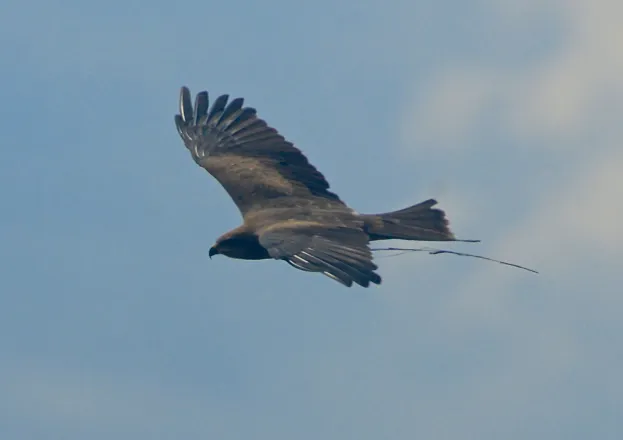Witnesses have said individual birds (black kites, whistling kites and brown falcons) can carry smouldering sticks retrieved from fire fronts up to a kilometre away, without singeing themselves or putting it out, and then drop them into unburnt patches of land to expand the area of devastation.
Nathan Ferguson, a volunteer firefighter interviewed for the research, recalls how they were trying to hold back the fire from entering the Kowandi radio station. "All of a sudden they’d swoop down, and next thing you know we had a fire behind us.
"And we physically saw how it started as they dropped a large branch that was on fire and it actually started right in front of our eyes because the conditions were right.”
Birds of prey have been known to congregate around bush fires in order to exploit the abundance of flying insects, rodents and reptiles as they escape the flames and smoke, but it has only just been discovered that these birds actually contribute to the spreading of the fire itself.
It is thought they do this to maximise the number of fleeing prey, literally risking their life to get a meal.

Its believed that Aboriginal communities have been aware of this destructive phenomenon for thousands of years, but the idea that these flying fire-starters are working together, utilising a sophisticated pack hunting strategy, is what makes this new research so remarkable.
The birds are not able to start the fires themselves, but are able to spread the fire once it has begun, often circling high above to look out for signs of a bush-fire they can profit from.
Other theories suggest the act is purely selfish, suggesting an individual bird starting its own separate fire would be able to reap the benefits first, before the feeding frenzy erupted.
This information could have serious implications for the use of fire as a tool, and perhaps suggest that humans were not the first to harness its usefulness.
"These are fascinating reports, but it's always difficult to draw conclusions about intelligence from observations alone," says Jo Wimpenny, a science writer who studied bird intelligence for her PhD. "Hopefully, data will now be collected that helps us understand how and why the birds are doing this - I'm excited to learn more!"

Read the paper in Journal of Ethnobiology.
Main image: Black kite at a fire. © Bob Gosford